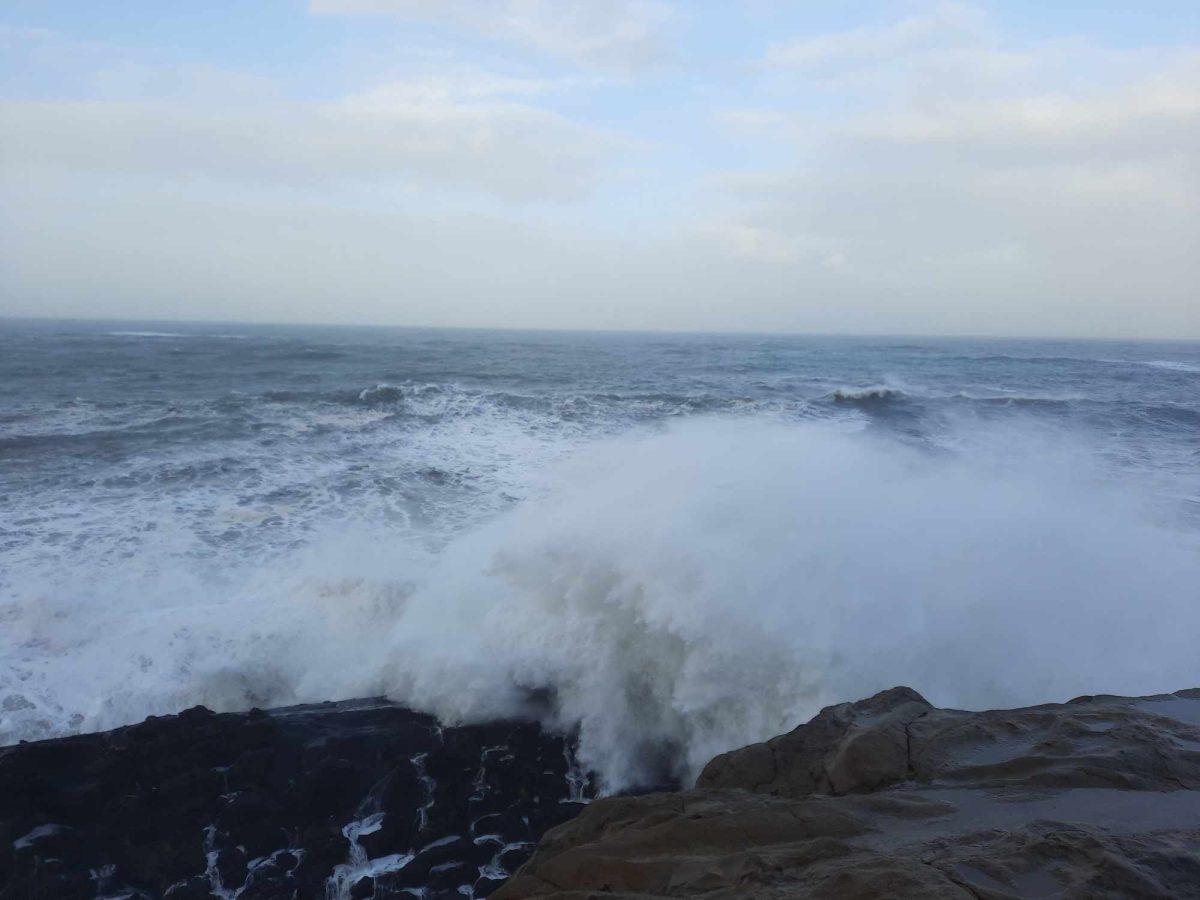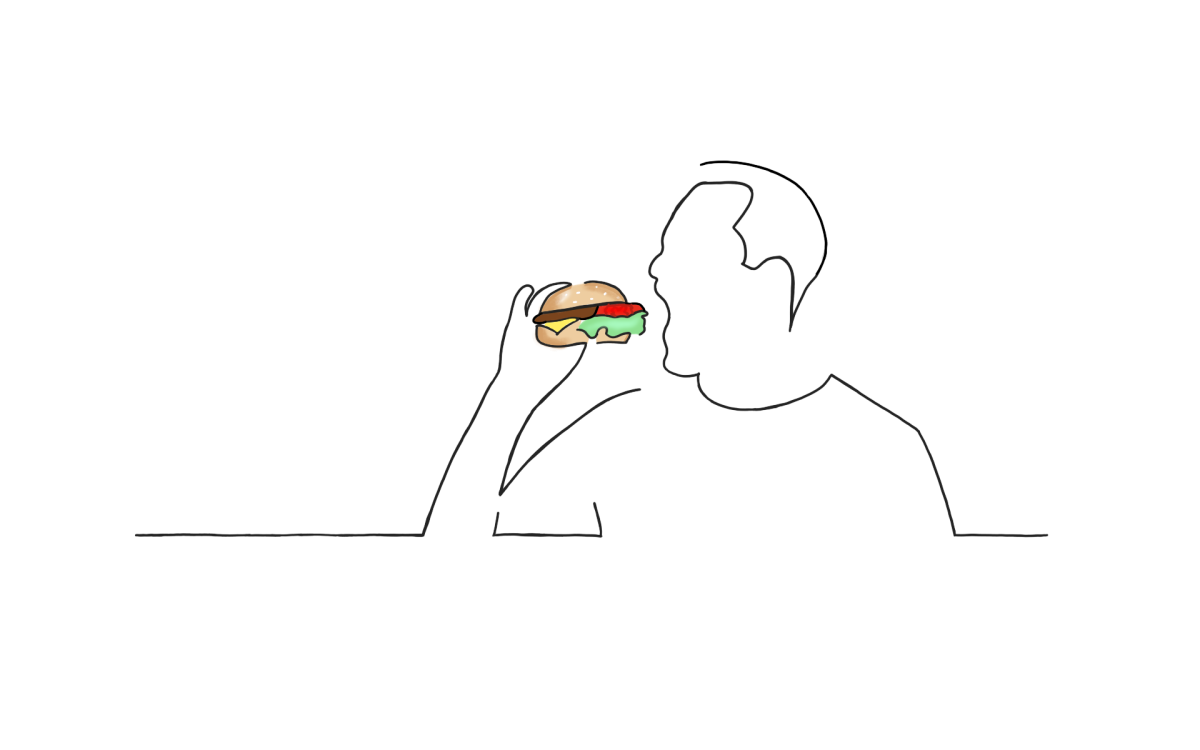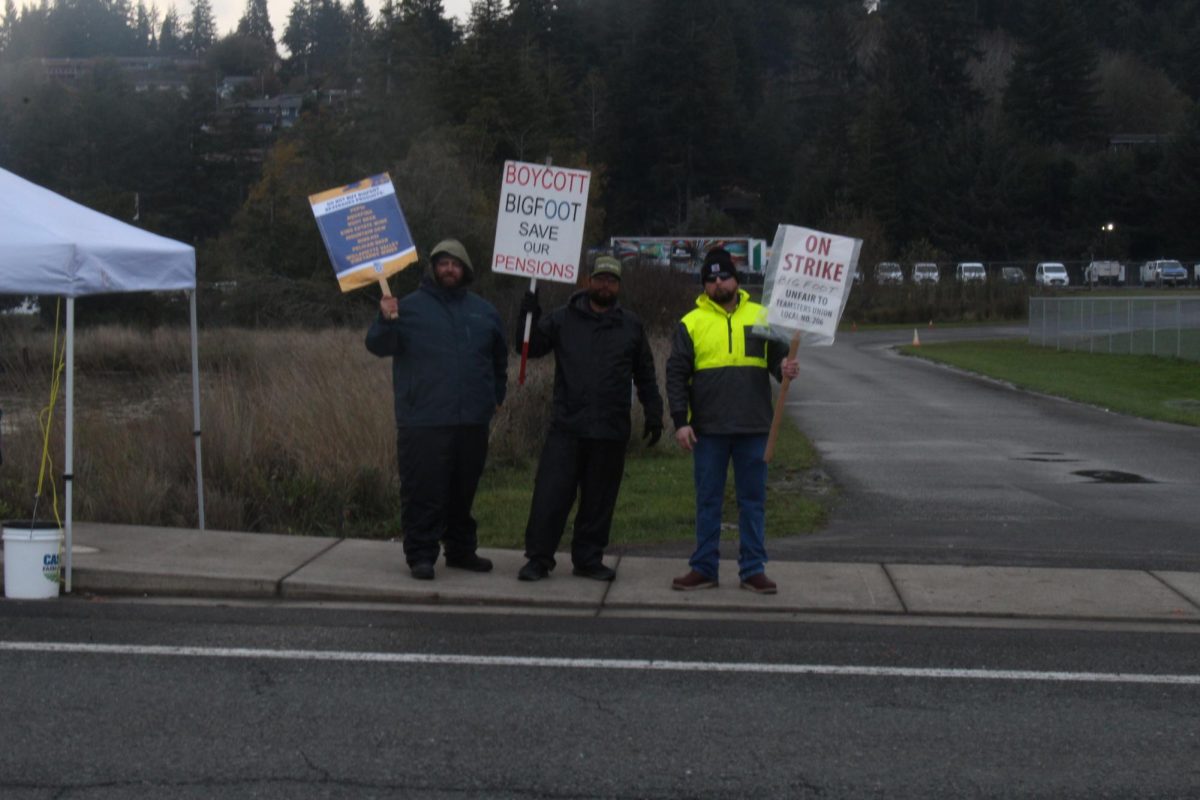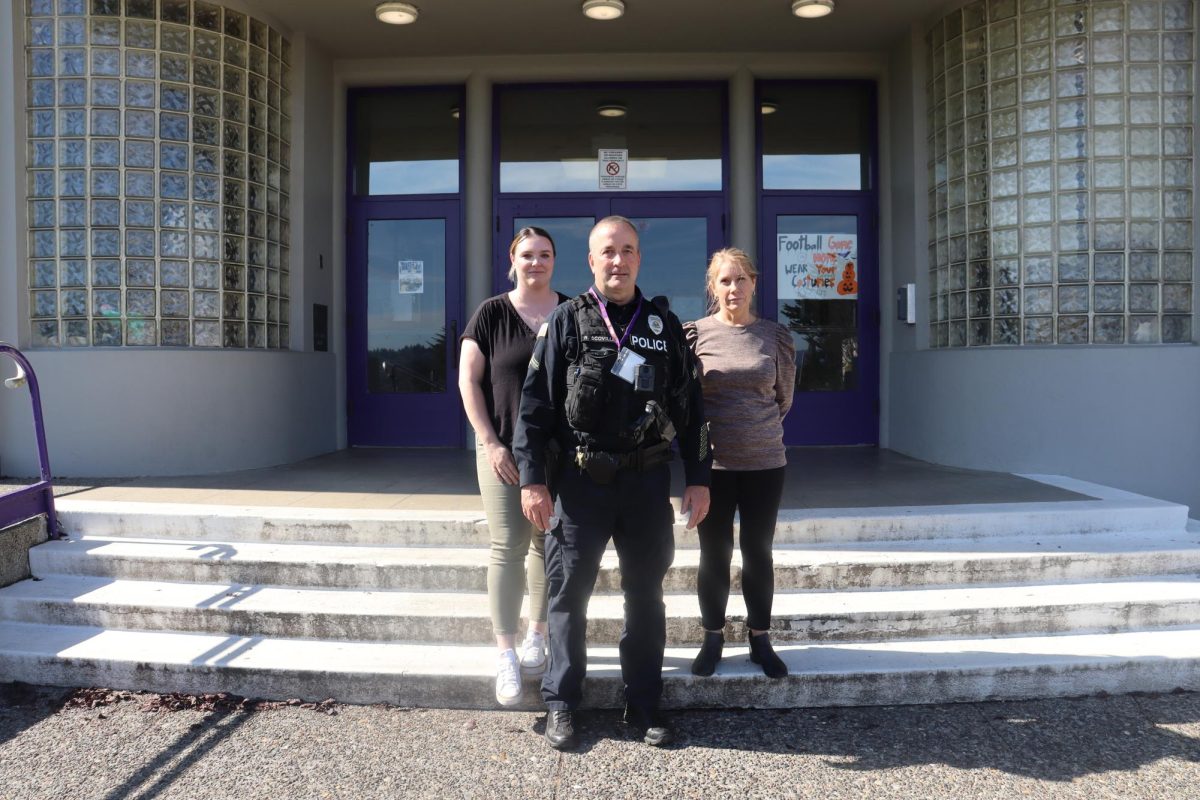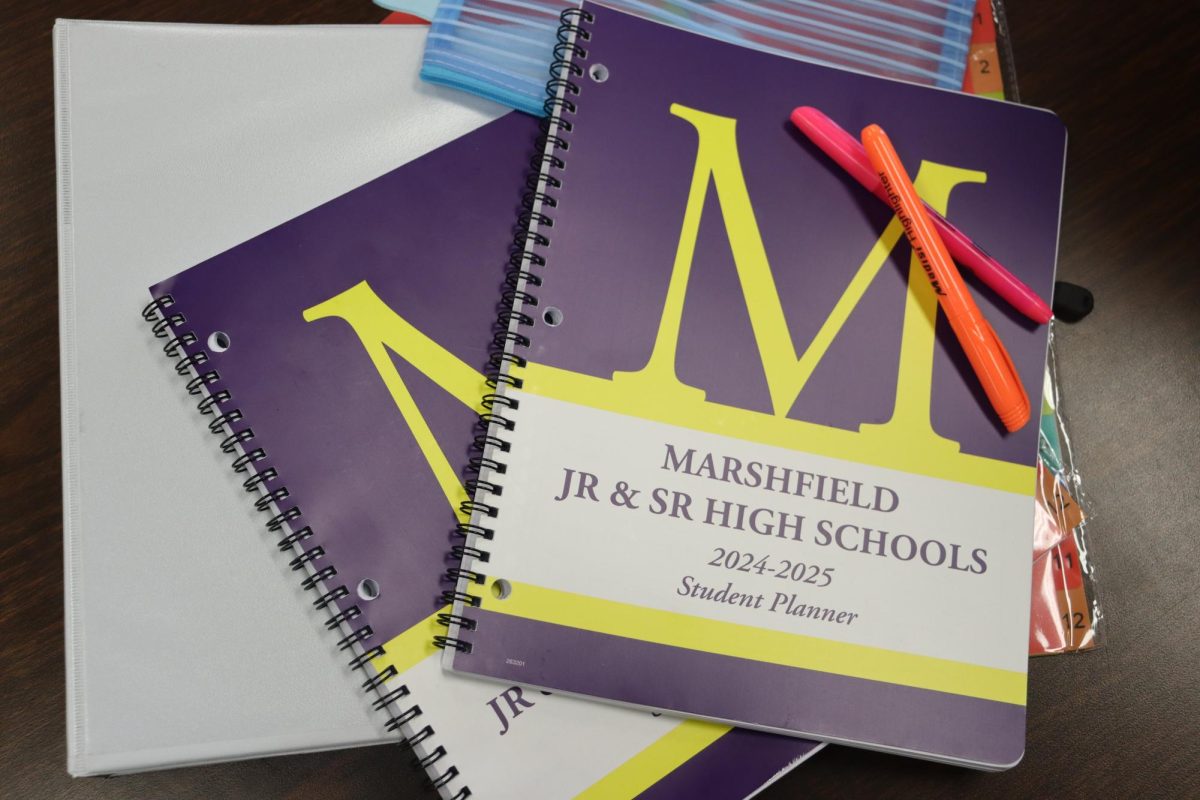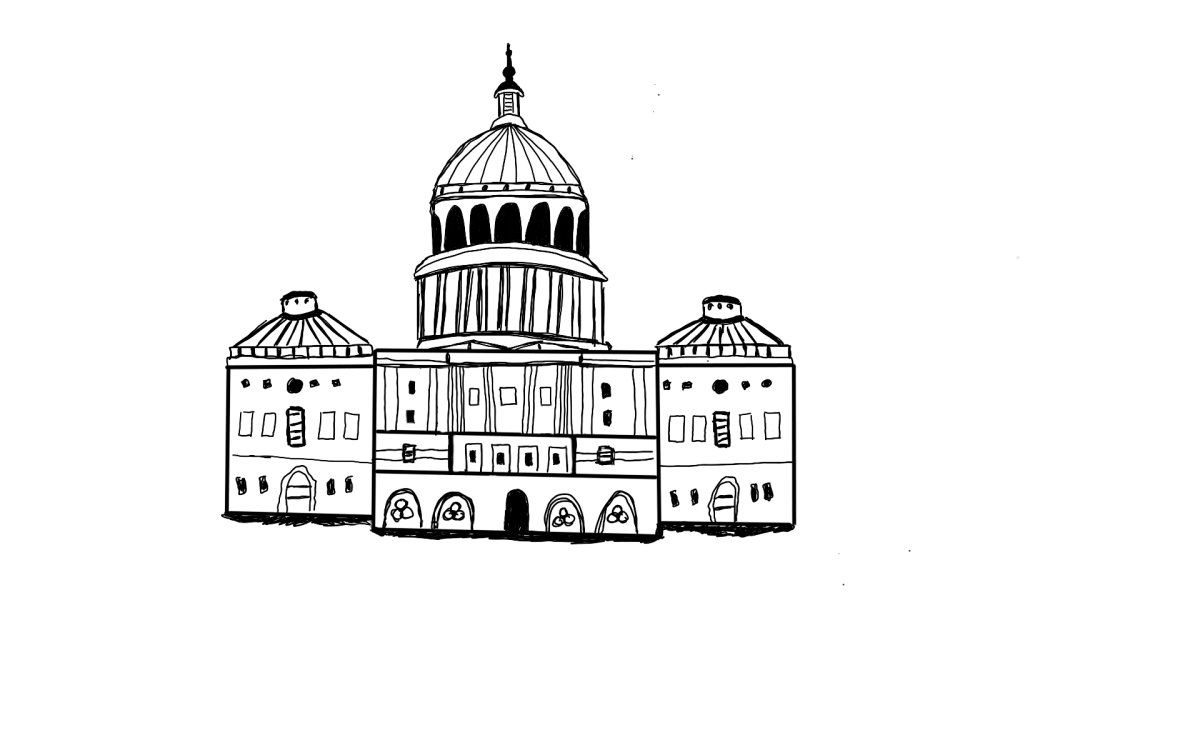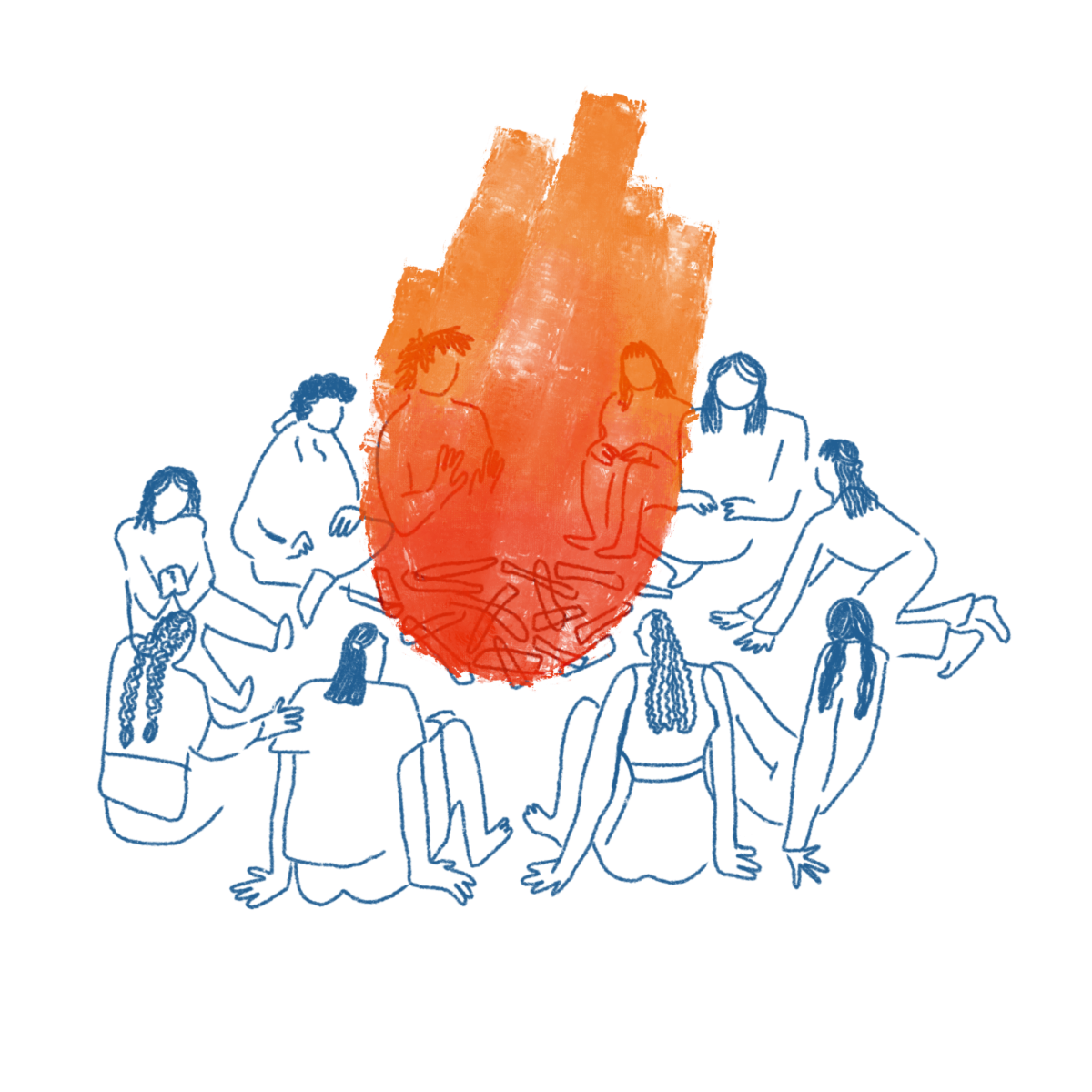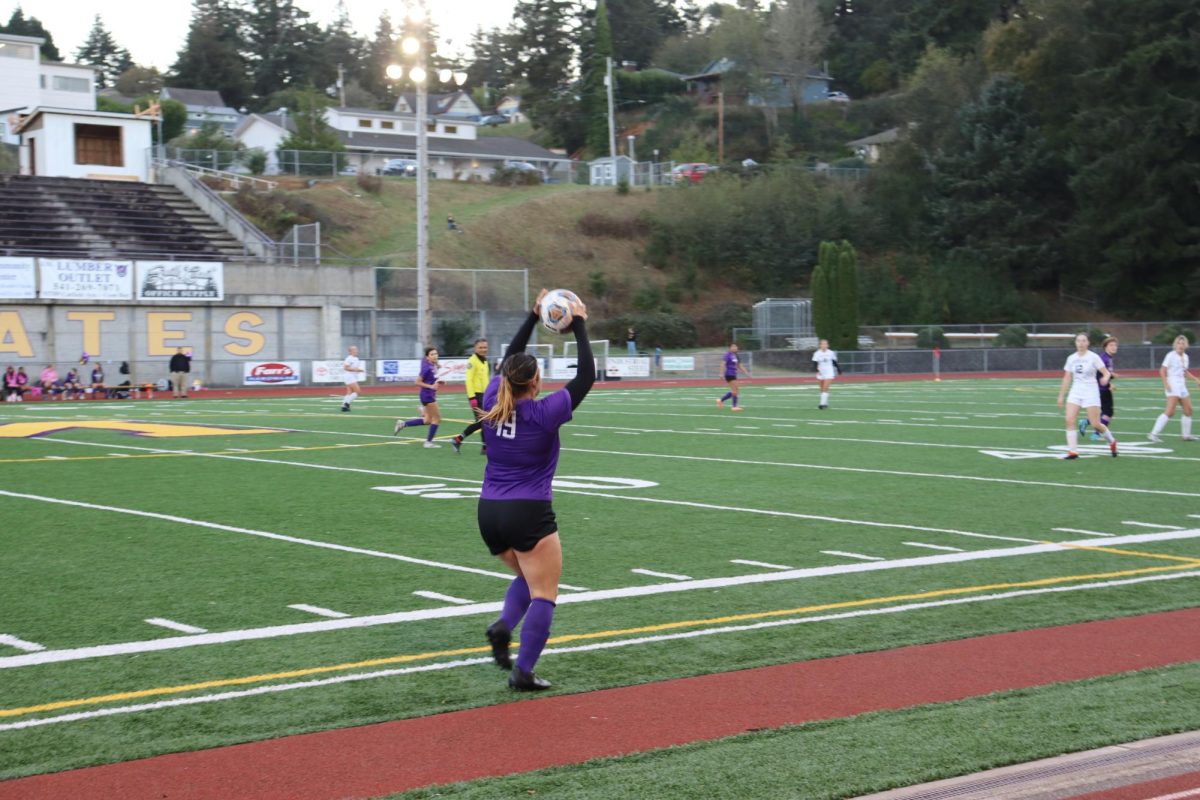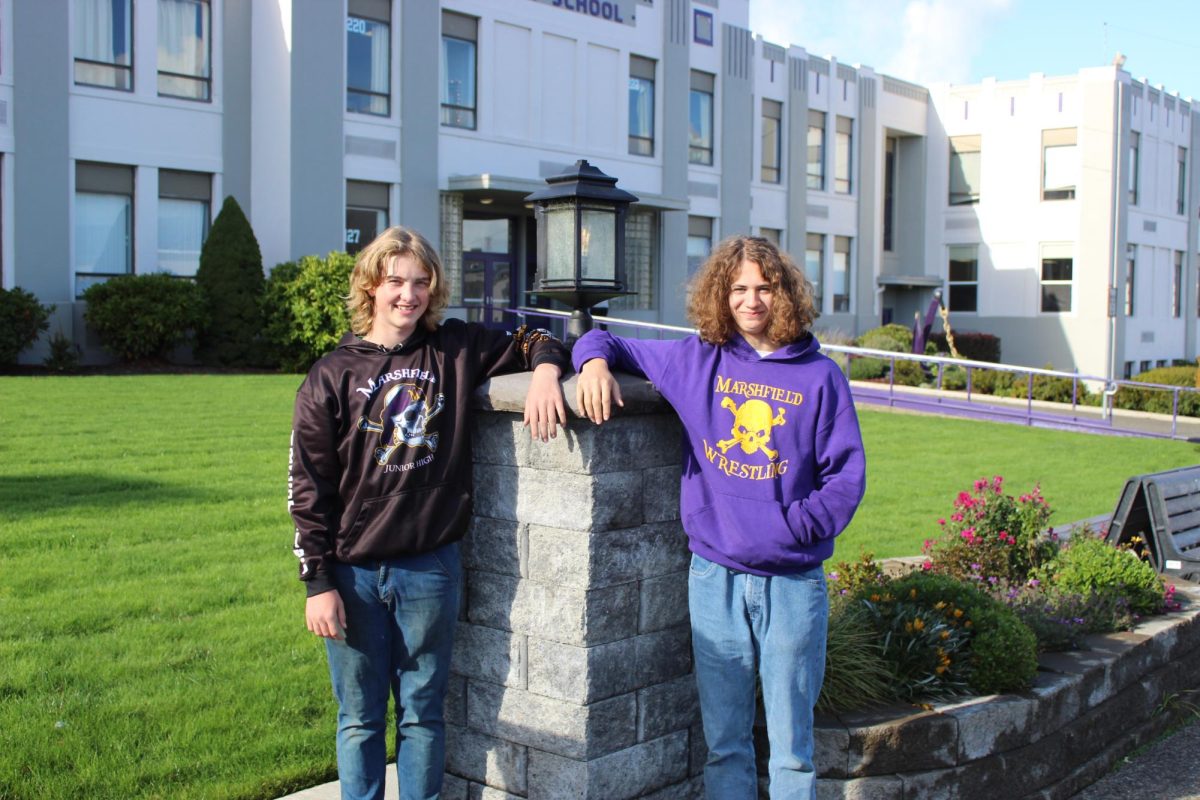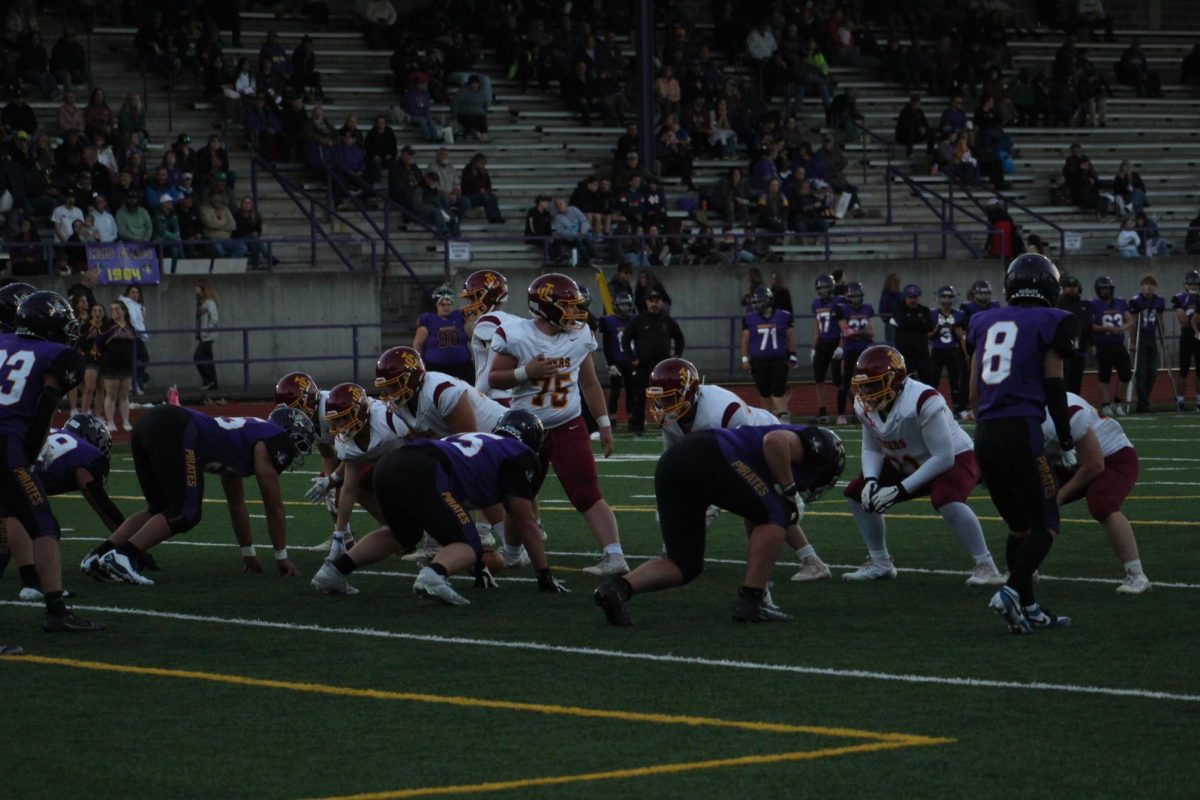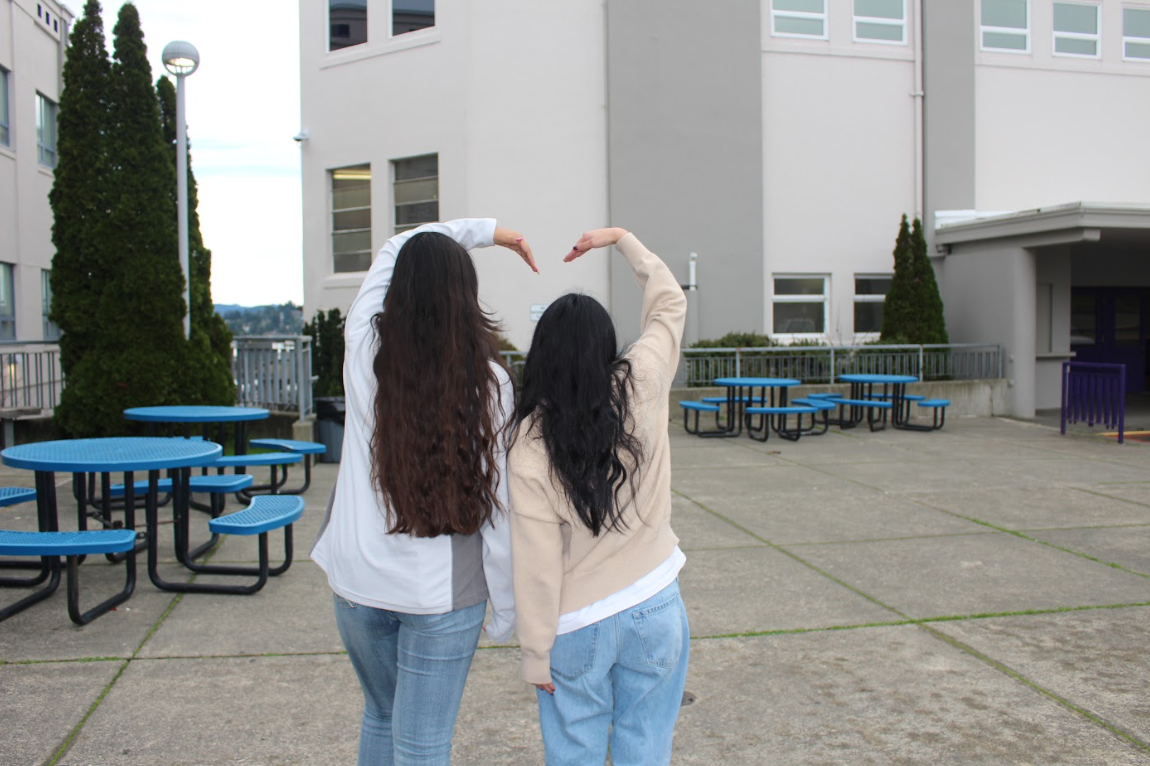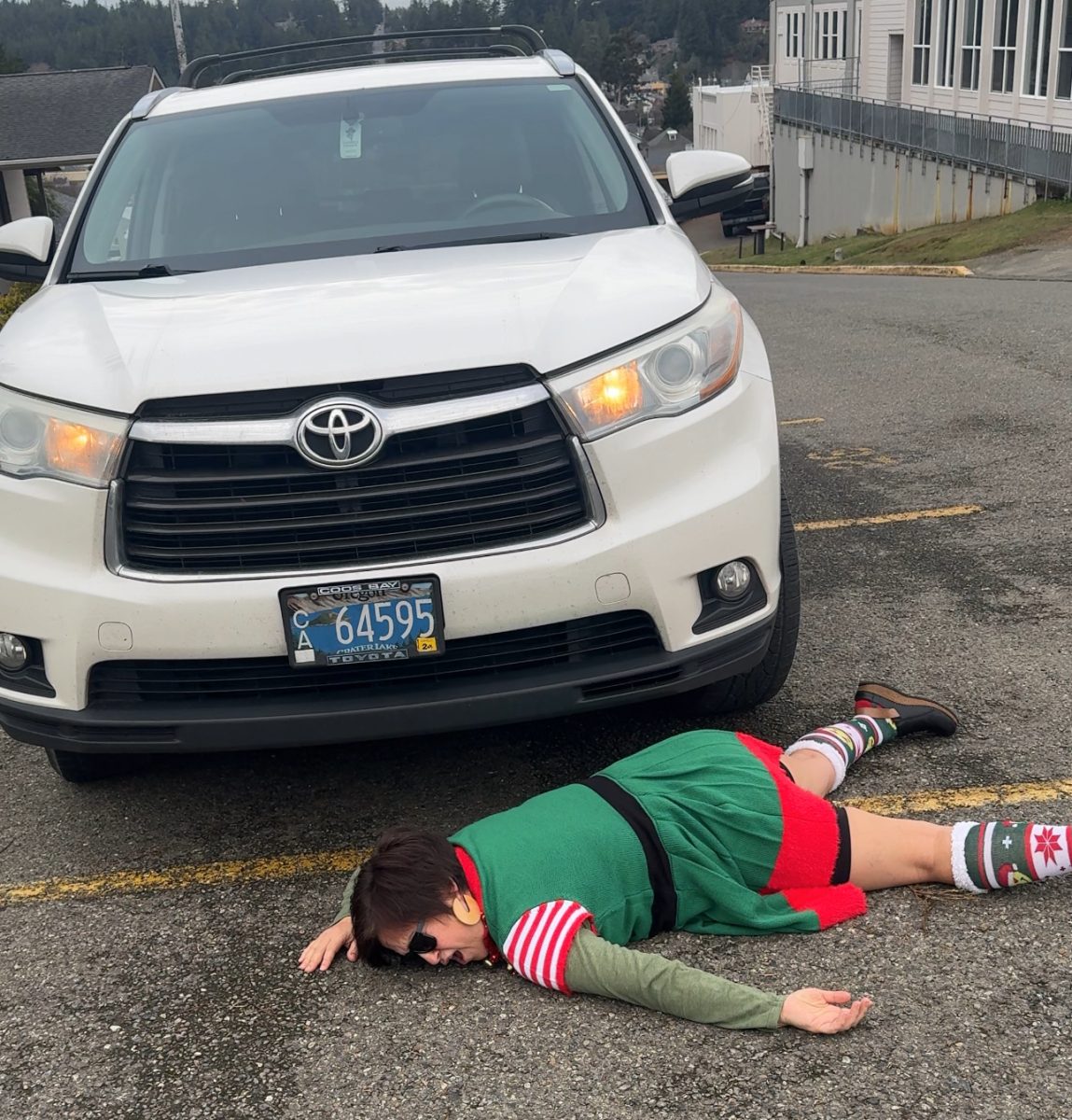The Myth
Two hands are placed palms down, fingertips touching. One represents the North American tectonic plate, the other the Juan De Fuca oceanic plate. One hand slides slowly beneath the other, until they come to a standstill, stuck, building up pressure, when one suddenly snaps back, creating “The Big One.”
Professor of Earth Science at Southwestern Oregon Community College, Ron Metzger uses this analogy often to explain the science behind the predicted magnitude nine or larger earthquake that is due in the Cascadia Subduction Zone along the West Coast of the United States, prompting a tsunami just minutes later.
“It’s not just the tsunami, it’s the one-two punch,” Metzger said.
Much of the information scientists in the nation have today is based on earthquakes of similar size, such as the magnitude 9.2 in Alaska in 1964, the magnitude 9.1 in the Indian Ocean in 2004, the magnitude 8.3 in Chile in 2010 and the magnitude 7.0 in Japan in 2011.
“Other people’s tragedies are our learning opportunities,” Metzger said.
The last earthquake that occurred in this area was in January of 1700, 315 years ago. Since then, the continent has been moving a few centimeters a year due to collision of plates. The movement is about as rapid as fingernail growth.
According to science teacher Jonathan Hill, however, this area has a large history of earthquakes dating back to the very beginning of Earth itself.
“We have a history of major earthquakes,” Hill said. “There can be as much as seven to 800 years between earthquakes; there could be as little as 100 or less years between earthquakes.”
That being said, an earthquake is overdue.
“When we say that we’re overdue, we’re saying that the average timeframe, when you take this history and average it, has already passed,” Hill said.
Contrary to popular belief, it is not plausible this earthquake will significantly change the makeup of the land, according to Metzger, as that has not been a common problem as other areas of the globe experience a similar fate.
The layout of the West Coast is not predicted to change in shape or size. Damage will be seen primarily on the surface of the coast. Buildings and other structures will likely collapse, and that is where the real tragedy will stem from, according to Metzger.
Because much of Coos Bay is built on artificial land, mostly sawdust, its buildings are in greater danger of collapsing than those in other towns on the coast, Metzger said.
“If we get a magnitude nine or greater, the devastation is going to be huge,” Metzger said.
The 2004 Indian Ocean earthquake prompted a tsunami to hit the coastline of Indonesia at Banda Aceh. In before and after photos, it can be seen that though the devastation was immense, the coastline is in the same physical state it was before, and none of the land was separated from the rest of the continent.
Because of these observations, it is probable the statement published by the New Yorker in July of 2015, which said, “Our operating assumption is that everything west of Interstate 5 will be toast,” is false.
Though the West Coast has experienced several insignificant earthquakes over the last couple of years, it is not probable these will lessen the outcome and devastation expected from “The Big One.” According to United States Geological Survey facts released by the government, unless as many as 32,000 magnitude three small earthquakes occur, the damage of the expected magnitude nine earthquake will be the same.
After both the earthquake and tsunami have passed, however, the area will face a much greater tragedy: seclusion.
The recent closure of Highway 42 provided an example of how isolated this area could become. Although it has been rumored it could take weeks or months for emergency aid in the area to arrive, Metzger said it is likely there will be limited aid provided.
“You hear people say there will be none, but I think there will be some,” Metzger said.
Larger cities affected, such as Portland, Eugene and Salem would receive this sort of emergency response first, as their populations are much higher.
Because there is potential that residents in this area will not receive aid for some time, it is recommended by emergency response teams to gather supplies in order to survive as needed.
According to Metzger, the most important thing is for people to be aware that this could happen in their lifetime.
“Awareness,” Metzger said. “That’s the key.”
Preparation
Drop, duck and cover.
A massive earthquake and tsunami is predicted to destroy the West Coast of the United States, leaving many to wonder if people are prepared for the potential disaster.
About every 300 years, seismologists predict a high magnitude earthquake and tsunami caused by the Cascadia subduction zone off the West Coast of North America. Since 315 years have passed since the last quake shook the West Coast, scientists say it is no longer a matter of if the next one will hit, but when. As “The Big One” draws closer and closer, communities up and down the coast are preparing for the worst, but are the residents of Coos Bay ready for the shaking?
As seen in incidents such as the1906 quake in San Francisco and the 2011 earthquake and tsunami off the coast of Japan, natural disasters of this magnitude can leave families without food, water, power and medical assistance for several weeks. This has caused many to prepare necessities such as first aid supplies, canned food and bottled water. Many students feel this is a smart step to take and have started preparing themselves. Senior Cassidy Keller said she feels that it is important to be prepared and has even volunteered at tsunami awareness organizations.
“Me and my family have prepared little bags with everything that we would need in case of an emergency,” Keller said.
Once the earthquake has ended, it is presumed that families living in red zones, or areas in danger of a tsunami, will have about 15 to 20 minutes before the massive wave reaches land. As well as being prepared with supplies, many have started developing a plan of evacuation to high ground. Because of Marshfield’s location, the tsunami serves little threat to the campus. However, it is unkown how well the buildings will withstand the shaking. Athletic Director Greg Mulkey said the school is prepared as well as it can be under the circumstances.
“When the real thing happens are we prepared? Probably not in some ways because you never know what’s going to happen, because you haven’t been through it,” Mulkey said.
In the event of an earthquake happening during school hours, students have rehearsed ducking and covering until the shaking has ended and exiting the building to designated areas for each grade. Having successfully performed a total of two drills this year with two more planned in the future, Mulkey said students are becoming more aware and confident in what to do during an emergency situation.
“I think preparing our students is one of the most important things we do here as administration,” Mulkey said.
Other coastal towns around Coos Bay are also taking action. Located in Bandon, Ore. the Southwestern Oregon Preppers (SWOP) is a volunteer group of people around the Southern Oregon coast that brings awareness to upcoming emergency situations. SWOP has a monthly meeting held at the Bandon Fire Department and several other locations around the coast and has had several discussions regarding “The Big One.” The meetings are free to the public and allow fellow preppers to get to know one another and exchange ideas in question and answer sessions. Avery Horton has been organizer of the group since 2012 and also founded the Southern Arizona Preppers before coming to Oregon. Horton feels that Oregon is not prepared for the tsunami and should start taking matters more seriously.
“People have a normalcy bias and think that tomorrow will be just like today, but the amount of disasters that happen every day should be a constant reminder,” Horton said.
The possibility of an earthquake and tsunami is always prevalent when living on the coast and preparing for emergency situations like this proves to be a community effort. By preparing students in schools and developing a plan as a community, everyone is able to be better prepared for natural disasters up and down the coast.
“The motto is be prepared, being prepared for anything that could make tomorrow different from today.” Horton said
Evacuation
With the possibility of an earthquake looming, students and staff continue to prepare in hopes that when the time comes, as many people as possible can make it through the disaster unharmed.
Athletic Director Greg Mulkey has taken the lead in organizing evacuation drills and overseeing that they are done properly and successfully.
“Students will evacuate the buildings, but this is also a central location for people in the community to evacuate to because of where it’s located and the buildings we have,” Mulkey said.
Marshfield is required to perform three earthquake drills per school year. Despite that, there are other factors that are difficult to practice.
“The thing we haven’t rehearsed is what we would be doing with those students and staff. What would we be doing after things have settled down? Those are hard to judge. It would depend on what kind of destruction it would cause to our community,” Mulkey said.
Science teacher Jonathan Hill said the responsibilities for a teacher following an earthquake are to make sure all able-bodied students are out of the classroom and to oversee any other measures to get injured students out of the classroom.
“After students have ducked and covered their head and neck and the earthquake quits shaking, that’s when teachers are in place getting students out,” Hill said.
According to Hill, once students are out of the building, they will gather by grade level in front of the Main Building. Then, one grade level at a time, students will move into the cemetery where they will gather by advisory classes. At that point, advisors will help to identify missing students and notify the administrator in charge.
Hill said a clear accounting of all students is important in the case of an emergency. If students tried to leave campus after an earthquake, administrators would mark the students as unaccounted for. Rescuers would then walk into dangerous buildings searching for students who are not there.
“Not only are students putting themselves in severe danger or potentially severe danger by leaving, but by not following the proper procedure, it can end up putting the rescuers’ lives at risk,” Hill said.
According to Mulkey, one issue that has not quite been figured out is a long term plan. Marshfield does not store food and water, so in the case of a natural disaster where people could not leave campus, any food or water would need to be brought in, most likely by air.
“The question is if we had to stay here for a period of time. There’s so many things that come into question,” Mulkey said. “Obviously food, water, and shelter, I mean those are the three most important things that we would have to be able to rely on if we had to stay here.”
However, even with all the preparation that goes into an earthquake, students and staff must continue to expect the unexpected because a natural disaster could bring any number of new problems.
“We recognize that in a real situation, all the plans that we have are not going to work perfectly, so there will have to be accommodations,” Hill said. “We will have to use our good judgement at the time of the disaster.”

